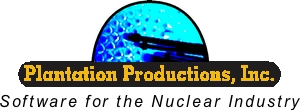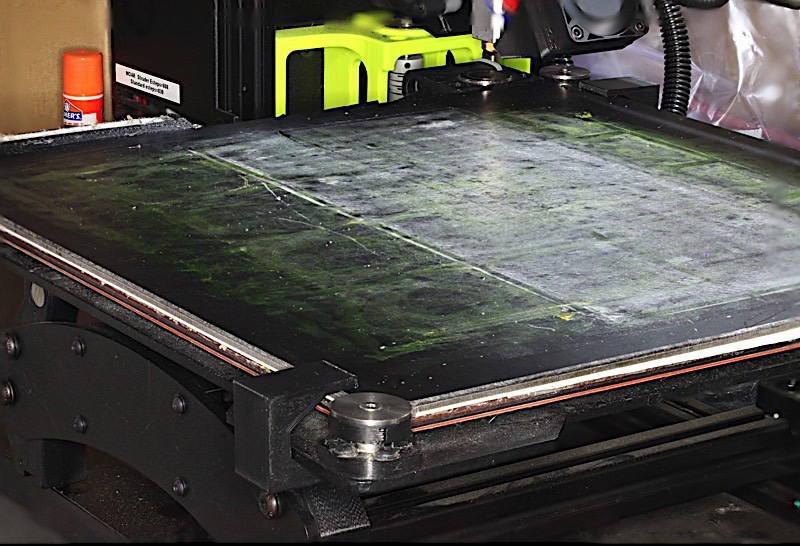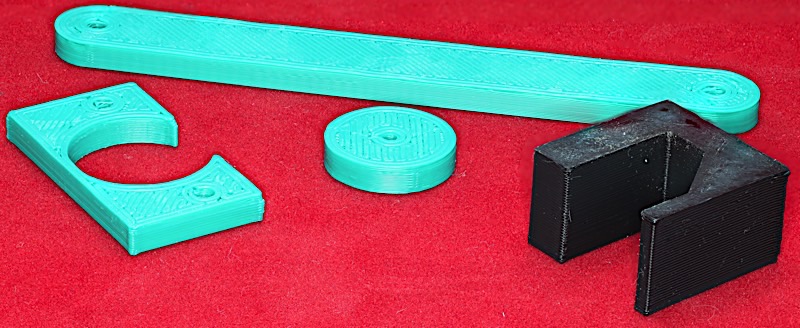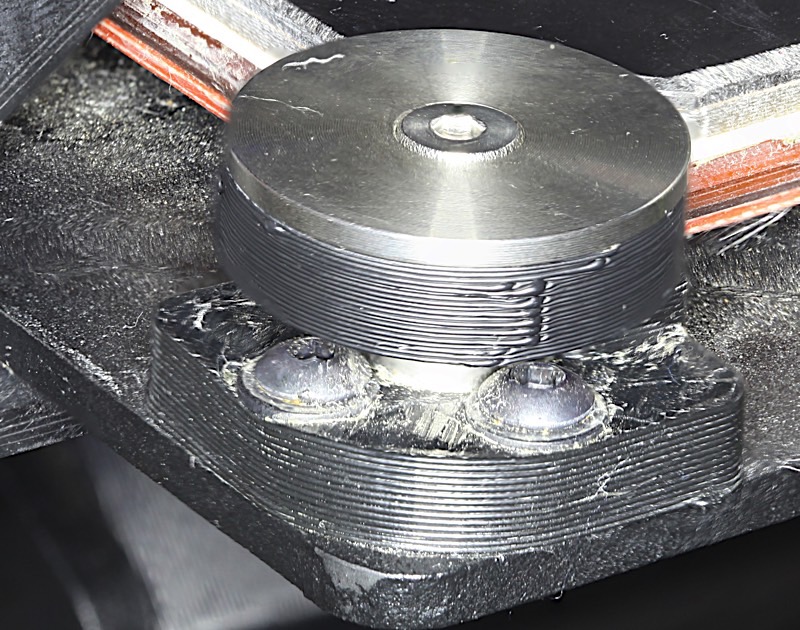
PrintInZ Adapter for Taz 6 3D Printer
A Removable Print Bed for the Taz 6

Note: All photographs appearing on this page are freely usable for any purpose. Links to high-resolution versions of the pictures appear below each picture.

High-resolution image shot with a Canon EOS 5D MII
PrintInZ Adapter for Lulzbot Taz 6
The PrintInZ 3D printer surface (print bed/plate, also known as a Zebra Board because one side is white and the other side is black) is a device that attaches to the printer bed of many common 3D printers on the market. They run anywhere from under $40 to about $90, depending on the size of the plate you purchase. PrintInZ provides different sizes and shapes for various printers; they advertise a 300x300mm plate for the Taz 6. With most PrintInZ plates, you simply clip the plate onto the hot bed of your printer (assuming it is heated) and with minimal adjustments to the system, start printing away.
A Shameless Plug for the PrintInZ Board
I first learned about the PrintInZ build plate from a 3D printing class I took at Vocademy in Riverside, Ca. (a makerspace). I purchased one for the Mark Forge Creator V Pro units they had there (and I continue to use it on a QIDI Tech I 3D printer I purchased, which is a clone of the Creator V; inexplicably, QIDI [pronounced "chiddy"] doesn't have a web site, but you can find their printers for sale everywhere [e.g., Amazon]). Prints on the Creator V with the PrintInZ plate were incredible; perfect adhesion (in fact, too good; sometimes it was hard to remove the ABS print) and nice smooth finish on the side interfacing to the build plate. If I have any complaints, it's that the adhesion is sometimes too good; I actually use a glue stick to make parts adhere less rather than stronger to the plate. The cool thing about the PrintInZ plate, versus other removeable build plates, is that it is flexible. After printing something, if it is stuck hard to the plate and it's difficult to pop it off even when using a clam knife, I just pull the plate, bend it over my thigh (usually twice, once in the X direction and once in the Y direction) and the cracking noise that follows tells me that the parts have loosened up considerably. While the PEI material on the TAZ 6 build plate also offers strong adhesion, I've ruined two sets of PEI tape (at $45 a pop) because the object adhered so strongly to the PEI surface that I wound up ripping the PEI tape off the surface when trying to pry the part off. After ruining two Taz 6 surfaces that way, I decided it was about time to get a PrintInz plate working on the Taz 6.
Alas, the 300x300mm plate for the Taz 6 isn't quite "plug and play" as the boards are for many other printers. Upon arrival I discovered several problems that required considerable hacking to solve. Hence this article – to show others how to get this fantastic print surface working on their Taz 6 as well.
Adapting the PrintInZ Build Plate to the Taz 6
First of all, the 300x300mm size overlays the metal bed leveling disks at the four corners of the print bed. Fortunately, this is nothing that a Dremil tool can't solve (just hack off the corners of the bed so that the print board just misses the leveling disks).
Note: Shortly after I designed the adapter pieces for the PrintInZ plate, Lulzbot announced a modular print bed system. This is basically the standard heated bed without having the PEI+glass plate glued to the heater bed (the PEI+glass plate is removeable). This new heated bed has the advantage that the build plate is removeable (though you do need to unscrew the four leveling disks to remove the build plate from the setup). This handles one of the advantages of the PrintInZ build plate – namely having a removeable build plate (albeit, one that is a PITA to remove). Note that you *should* be able to substitute a PrintInZ build plate for the PEI+glass plate of this new LulzBot component and you might not have to hack off the corners of the PrintInZ plate to make it fit on the board (though you'll still have to screw/unscrew the leveling disks to insert/remove the PrintInZ plate). But more on this concept at the end of this article.
The next problem is that the PrintInZ build plate adds around 4.5 mm of height to the build plate when you set it on the system. Originally, I thought I could go into to Simplify 3D (the slicer program I use that is an order of magnitude better than Cura) and set a Z offset (in the "Global G-Code Offsets" box on the G-Code tab) of +4.5mm and this would fix everything. That theory almost worked. The place where you get into trouble is that if there is a problem during auto-alignment, things get really messed up. Either the print head is floating in the air above the print head cleaning pad or (worse), the printer drives the print head into your PrintInZ plate (gouging it). The correct solution is hardware, not software: raise the leveling disks, cleaning pad, and home button up 4.5mm to adjust for the height of the PrintInZ plate when it is sitting on top of the Taz 6 build plate. I accomplished this by printing ten pieces of plastic to boost the height of the four leveling disks, the cleaning pad, the home button, and four clips to hold the PrintInZ plate firmly on the Taz 6 build plate:

High-resolution image shot with a Canon EOS 5D MII
3D Printer Files (STL):
The home button booster adds 4.5mm of height to the home button (on the back left side of the print bed). The home button is a coarse "this is where the bed is located" indication for the printer. The Taz 6 firmware uses this home button to determine the maximum Z distance down that the print head is allowed to travel when auto-leveling. By sticking the home button booster (the rectangular piece above with the circular hole cut out of the middle) underneath the plastic frame around the home button, you're telling the Taz 6 that the build plate is located 4.5mm above the point where the Taz 6 normally believes the build plate to be (which conveniently aligns the print head with the approximate top of the PrintInZ plate).
Next, you need to raise the felt cleaning pad up by 4.5 mm. The Taz 6 firmware uses the home button to determine how far down to drive the print head into the cleaning felt when cleaning the tip prior to auto-alignment. As such, if you don't boost the felt pad by the same 4.5mm you've raised the home button, the Taz 6 will leave the print head floating in the air when it's trying to clean the print head. The long oval piece in the picture above sits under the felt pad to boost it by the same 4.5mm as the home button.
You'll also need to raise the leveling disks by the same 4.5mm as the home button. Otherwise the Taz 6 will assume something is wrong when it tries to find the leveling disk (which is now significantly below the position indicated by the homing button). By printing the four circular objects in the photo above, and placing them underneath the four leveling disks on the build plate, you raise the leveling disks by the same amount as the home button.
Note: technically, it would be wisest to machine four new leveling disks out of aluminum (or stainless steel) on a lathe. The original disks are about 1.6mm thick, so the new machined disks should be around 6.1mm thick (just under 22mm diameter) with a countersunk hole in the middle (to hold an M03 countersink machine screw). My fear is that the ABS disk boosters would compress over time whereas a fully metal leveling disk would not have this problem. However, I've operated for several months now with the plastic disks with no issues whatsoever at all, so maybe metallic leveling disks aren't as necessary as I first thought.

High-resolution image shot with a Canon EOS 5D MII
Finally, you'll need four clips to hold the PrintInZ board firmly on the Taz 6 build plate. I clip these on as shown in the following picture:

With all the pieces in place, printing is almost now exactly as before. The hardware sensors and auto-leveling features of the Taz 6 automatically take into account the added 4.5mm height with no changes to your software or designs.
There is one adjustment you might want to make. Although the PrintInZ boards are nominally 4.5mm thick, there are small variations in batches of the boards. Each individual boards should have a consistent thickness but boards from different batches might vary in thickness by a small amount. If you have some digital calipers (cheap ones from Home Depot will work fine for this), measure the thickness of your board. If it is not consistently 4.5mm at all four corners, you might want to adjust for the Z-axis difference in the Configuration->Advanced Settings menu on the Taz 6 (you can raise or lower the print head Z distance in this menu).
The New Taz 6 Build Plate
As noted earlier in this article, Lulzbot announced a new modular build plate a couple months after I got the PrintInz plate working on my Taz 6. This solves one of the major problems with the fixed build plate – you can now remove the build plate if the parts are stuck tightly to the build surface and work on removing them elsewhere (without putting undo pressure and torque on the rest of the Taz 6 printer, a problem that has always concerned me when using fixed/non-removeable build plates).
The only catch is that "removeable" doesn't mean "easily removeable" in the context of their modular build plate. You have to remove the four M03 screws and leveling disks on the print bed to remove the build plate. That's a lot of extra work. However, if you don't need to remove your build surface that often (e.g., not after every print), this is certainly a viable option.
The one issue with the new modular build plate that still remains is that the build plate is not flexible. Although you can remove the build plate and spare your printer the abuse of undo pressure and torque while removing parts, if they're really stuck on the bed you may still destroy the PEI surface when removing the part. The PrintInZ plate is still superior in this respect.
I haven't gotten one of the modular beds yet (I'm sure I'll get around to ordering one at some point or another). However, I suspect that it will also be compatible with the PrintInZ plate. If I had to guess, I'd bet you could attach the the PrintInz directly to the modular heater bed without hacking off the corners of the PrintInZ plate. Of course, you'd still have to unscrew the leveling disks to remove the plate (and rescrew them when installing the plate), so if you're only prone to removing the plate when things are really stuck on the surface, this could be a plus.
Of course, the PrintInZ plate is probably still thicker than the metal/glass/PEI build plate of the Taz 6 modular print bed, so you'd still need home button and cleaning pad risers (shouldn't need leveling disk risers). The height of those risers won't be 4.5mm because you'll have lost some space by not having the modular glass/PEI bed in place. When I manage to land one of these build plates, I'll figure out the dimensions, create new parts, and update this page.